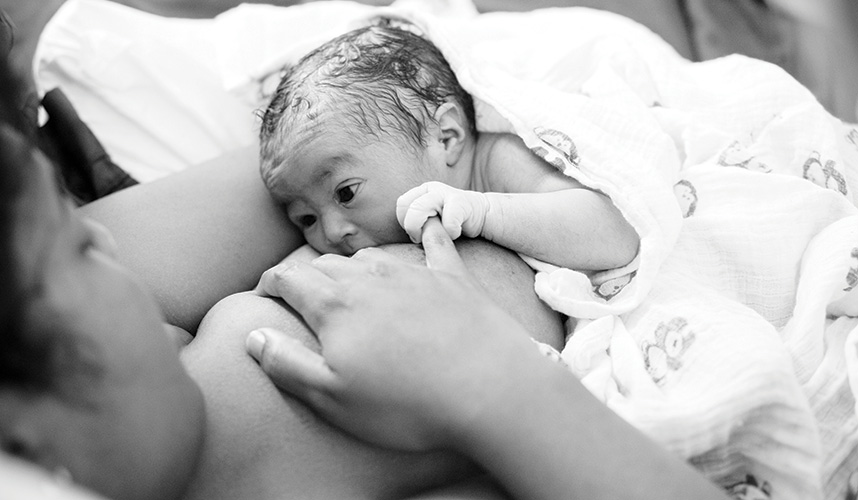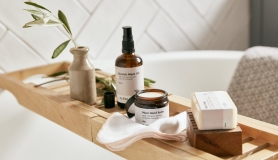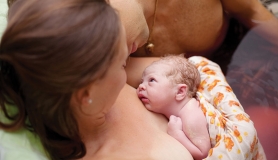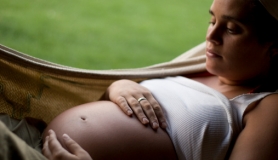Before you even try to get pregnant, the prospect of meeting your baby is one that will fill you with immense joy. As your pregnancy progresses, the love and the feeling of magical excitement will simply grow; you’ll start to consider the surroundings and ceremony that will welcome that precious new life. There are so many options available to you, meaning that you can give birth in a way that feels right for you and your family. When it comes to making childbirth choices, it is worth taking the time to really consider what you want. Here are ten reasons why having a home birth may be right for you:
“birthing at home means your older children can be part of the experience”
- You will feel more at ease - The prospect of giving birth can feel as overwhelming as it is exciting. Venturing into unknown territory can often feel terrifying. This fear can stifle the birthing process and limit your natural ability to listen to your body. Your body knows what to do and by listening to your instincts you can really engage with the experience. Childbirth can be absolutely blissful, but you need to create the right environment that allows you to truly tune in with your body. Numerous studies have shown that labour tends to progress more effectively at home, as women feel more at ease. For many women, arriving at hospital can hinder their birthing process due to anxiety. Your primal instinct is to give birth in a place that feels safe, secure and comfortable. There is nowhere more fit for purpose than your own home.
- You will have more freedom - From your musical choices to creating your desired environment (from burning candles and aromatherapy oils to giving birth before a roaring log fire) you have so many more options at home. In hospital you are limited in what you can use due to health and safety regulations. You also need to think practically, there is a limit to how much equipment can you realistically take into a hospital. At home, you can slowly create the space that you want. You won’t know exactly what you’ll need until your labour starts, so keeping a wide variety of choices available is a wise idea. You can control the temperature of the house, the scent in the air and even the aesthetic that surrounds you.
- It is easier for your older children to play a role - Whether you choose to have your older children present at the birth, or simply want them close by so that they can meet their new sibling as soon as they arrive – birthing at home means that they can be part of the experience. They will also have the reassurance of being surrounded by their own belongings, and there will be plenty for them to do to keep them occupied. Without a limit to the number of visitors that you are allowed, you’ll be able to welcome in more friends and family at home. You’ll also benefit from a number of different rooms, so that visitors do not have to be present for the whole labour.
- Your birth partner will feel more comfortable - Hospitals are built for patients. Visitors are faced with machine coffee, vending machines offering sugar-laden snacks and a long walk to find the nearest toilet. Even simple things like not having to worry about getting change for the car park can help your birth partner to feel more relaxed. The more in control and calm that your birth partner feels, the more positive the experience will be for you both.
- Everything you need is to hand - From healthy food to your own natural medicine cabinet, from your favourite music to a decent stack of books (in case things take time to progress); by birthing at home you can ensure that you have everything you need readily available. Your midwife will bring you a box of useful supplies towards the end of the pregnancy and you may choose to buy or rent a birthing pool. You may also find great comfort in familiar surroundings and objects that have meaning to you.
- You can take the time you need without restrictions - Hospitals need to adhere to strict time limits to ensure the smooth running of the operation and to facilitate shift change-overs. This can mean that women are put under immense pressure to give birth as quickly as possible, which in some cases means that methods of intervention such as drugs to accelerate things. The use of forceps or ventouse may also be encouraged. At home there is less pressure to fit to a schedule and you can allow your baby to take all the time that it needs to emerge.
- There is less risk of c-section and intervention - According to the Birthplace Study from the National Perinatal Epidemiology Unit women who give birth at home have a lower risk of having an unplanned c-section. Women who opt for a home birth are 28% more likely to have a ‘normal’ birth – which means without induction, epidural, assisted delivery or unplanned caesarean. The majority of women who give birth at home, use a birthing pool. If you are interested in a natural birth, then home birthing can give you the confidence and sense of security to help things progress.
- There is less risk of haemorrhage & infection - The Birthplace Study also identified that the risk of haemorrhage was lower, as well as the risk of infection for both mother and baby. In Midwifery Today Issue 48 Margarett Scott CPM recommended the following three strategies for avoiding postpartum haemorrhage - “good nutrition…knowing the mother and not rushing the delivery of the placenta.” As a good connection between mother and midwife is more likely in a home birth and there is less pressure to rush proceedings, it is likely that these factors are the reasons for the reduced risk.
- It’s the ideal start for breastfeeding and a relaxed babymoon - Breastfeeding requires plenty of skin-to-skin contact and cuddles immediately after the baby is born. Of course, this can happen in a hospital setting but at home you have more time to focus on your new arrival without worrying about when you will be discharged and without interruptions. You can cocoon yourself away and take the time to connect with your little one, bond as a family and establish a routine without worrying about the world outside your home. There is something especially magical about knowing that your baby took their first breath in the family home, where so many precious memories are waiting to be carved.
“There is something especially magical about knowing that your baby took their first breath in the family home, where so many precious memories are waiting to be carved”
MORE INSPIRATION
READ A Gentle Guide to Home Birth: Natural childbirth in your own home gives all the information you need about giving birth at home. From nutritious food and yoga to active birth positions and complementary methods of pain relief, A Gentle Guide to Home Birth will help you feel in control. Covering the role of your birth partner in labour and ways to include older children, Samantha Quinn and Holly Daffurn’s gentle guidance and personal insight will make your home birth a positive experience to be treasured.
EXPLORE FURTHER Holly & Samantha’s book The Natural Baby: a gentle guide to conception, pregnancy, birth and beyond is also published by Green Books.
Photography by Shoots & Giggles Photography







